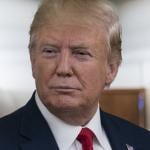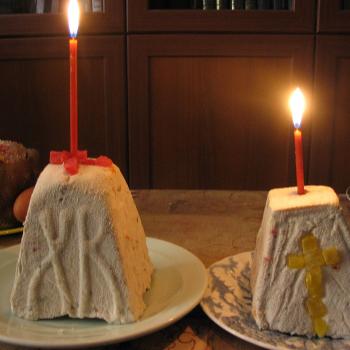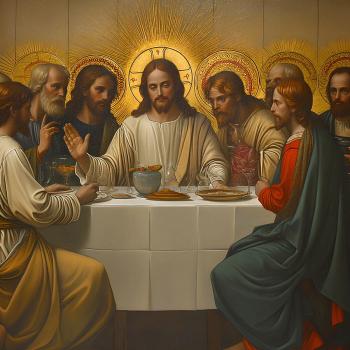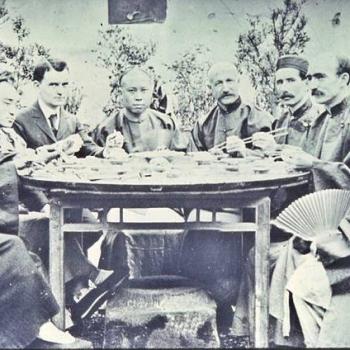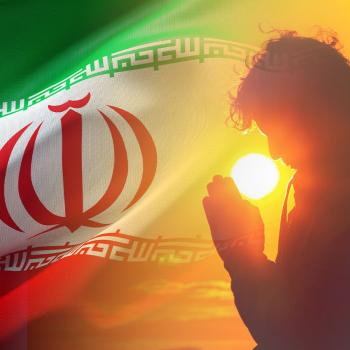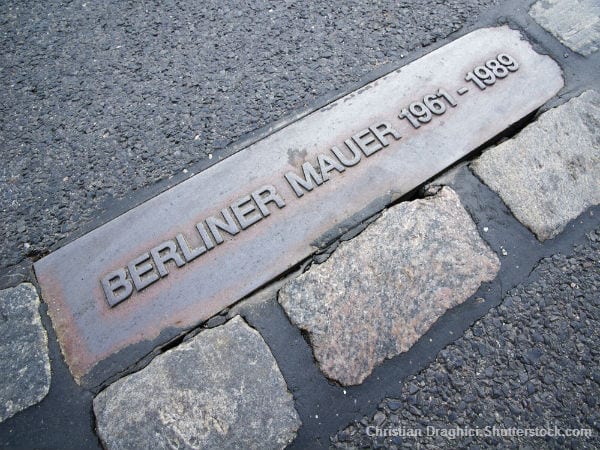 On a driving trip through Scandinavia I got my first view of aurora borealis, the Northern Lights. In Finland, just twenty miles from the Russian border, I stood shivering in the cold and watched as waves of luminous color arced across the sky, covering perhaps one-seventh of the dark dome above. Tendrils of green light pulsed and slid together like the interlocking teeth of a giant comb, blocking the stars above. It seemed at once ominous and magical.
On a driving trip through Scandinavia I got my first view of aurora borealis, the Northern Lights. In Finland, just twenty miles from the Russian border, I stood shivering in the cold and watched as waves of luminous color arced across the sky, covering perhaps one-seventh of the dark dome above. Tendrils of green light pulsed and slid together like the interlocking teeth of a giant comb, blocking the stars above. It seemed at once ominous and magical.
An hour later, after checking into a cheap motel, I turned on the tiny black-and-white television and saw images of what looked like a riot. Crowds of young people in blue jeans were smashing something with sledgehammers, obviously trying to destroy it. Not knowing Finnish, I did not learn until the next day what had happened the night before: on November 9, 1989, the Berlin Wall fell.
For 28 years the wall had snaked across the landscape of a divided Germany. Quite possibly the ugliest construction in history—concrete posts laced with miles of barbed wire, bunkers slotted for machine guns, watchtowers and searchlights mounted on steel scaffolds—this barrier was built to keep people inside, not out. It was communism’s last redoubt.
You would have had to live through the 1960s to realize the enormity of what took place in 1989. Whereas today’s students practice “active shooter” drills, kids in that era practiced “Duck and Cover.” When an alarm sounded, we moved away from windows and climbed under our desks with our arms over our heads. Nikita Khrushchev, the Soviet Premier, had promised, “We will bury you,” and we had no better defense against an imminent nuclear attack.
Communism was ascendant in those days, ruling over a third of humanity. Time magazine regularly printed a map showing its global advance and each time, it seemed, the red stain on the page grew in size. Many universities in the West had taken on a Marxist tilt, and most of Europe was at risk. In 1968, French Communists and Socialists formed an alliance, and workers began a nationwide strike that virtually shut down the country.
Flash forward two decades. In 1989, shockingly, not just the Berlin Wall but the entire system of communism began to collapse. Within months, almost 600 million people would throw off its yoke.
In the thirty years since that momentous day in November, historians have had a field day analyzing what prompted a revolution no one had predicted. Some credit the arms race driven by Ronald Reagan, which helped bankrupt an already shaky Soviet economy. The Collapse: The Accidental Opening of the Berlin Wall details a series of blunders by East German bureaucrats that led to the surprise decision to allow free movement to the West.
Behind the wall, East German churches played a key role. According to Sam Nunn, then Chairman of the Senate Committee on Armed Services, the Cold War ended “not in a nuclear inferno, but in a blaze of candles in the churches of Eastern Europe.” Church was the one place where the communist state allowed freedom of assembly, and throughout 1989 four churches in Leipzig, East Germany, (including Bach’s Thomaskirche) held weekly prayer meetings. The pastors conducted the old Lutheran hymns, addressed their congregations with the Bible in one hand and the daily newspaper in the other, and led rounds of prayer.
At first, a handful of Christians, a few dozen at most, assembled. Gradually, though, the congregations for these prayer meetings began to swell, attracting not just believers but also political dissidents and ordinary citizens. After each meeting the groups would join together and walk through the dark streets of Leipzig, singing hymns and holding candles and banners—a most benign form of political protest. Similar demonstrations spread across the country, most of them beginning in this way, with worship.
News media from the West soon picked up the story. Alarmed, the communist hierarchy debated how to stamp out the peaceful marches. Secret police surrounded the churches, sometimes roughing up the demonstrators as they took to the streets. They arrested 3,500 marchers and injured many others. Yet crowds in Leipzig kept growing: hundreds, thousands, then 50,000 protesters.
On October 9, nearly everyone expected the political pressure to reach a critical mass. East Berlin was celebrating the forty-year anniversary of the communist state, and authorities viewed the marches in Leipzig as a provocation. Police and army units moved into the city, with instructions from East German leader Erich Honecker to fire on the demonstrators. The nation braced for a replay of Tiananmen Square, the tragedy in China only four months before. Leipzig’s Lutheran bishop warned of a massacre, hospitals cleared emergency rooms, and churches and concert halls agreed to open their doors in case people needed a place of refuge.
No one knows for sure why the military held their fire that night. Some theorize that Mikhail Gorbachev himself telephoned a warning to Honecker. Others believe the army was simply cowed by the huge crowds. But everyone credits the prayer vigils in Leipzig for kindling the peaceful revolution. Despite the threat, 70,000 people made an orderly march through downtown Leipzig on October 9. The following Monday, 120,000 showed up. A week later, 500,000 turned out—nearly the entire population of Leipzig.
In early November the largest demonstration of all took place, almost one million people marching peacefully through the capital city of East Berlin. Police and soldiers with all their weapons seemed powerless against such a force. Erich Honecker resigned, humiliated. And at midnight on November 9, something no one had dared pray for happened: a gap opened up in the Berlin Wall. East Germans streamed through the checkpoints, past guards who had always obeyed their orders to “shoot to kill.” On that night the hated Berlin Wall came tumbling down without a shot being fired.
Not a single life was lost as throngs of people holding candles brought down a government in East Germany. Like a windstorm of pure air driving out pollution, the peaceful revolution spread across the globe. In 1989 alone ten nations comprising more than half a billion people—Poland, East Germany, Hungary, Czechoslovakia, Bulgaria, Romania, Albania, Yugoslavia, Mongolia, the Soviet Union—experienced nonviolent revolutions.
As Bud Bultman, a producer and writer for CNN, wrote: “We in the media watched in astonishment as the walls of totalitarianism came crashing down. But in the rush to cover the cataclysmic events, the story behind the story was overlooked. We trained our cameras on hundreds of thousands of people praying for freedom, votive candles in hand, and yet we missed the transcendent dimension, the explicitly spiritual and religious character of the story. We looked right at it and could not see it.”
A huge banner appeared across a Leipzig street: Wir danken Dir, Kirche (We thank you, church).
Historians still have not sorted out all the reasons for communism’s collapse. As one who lived through the 1960s—a decade when barricades went up in the streets of Paris, when leftists were bombing public buildings in the U.S., and when academics were embracing Marxism—I trace the fault line back to a lone Russian, his courage hardened to steel during eight years in the Gulag, who dared proclaim, “It is a lie.” Aleksandr Solzhenitsyn released the first volume of his massive book, The Gulag Archipelago, in 1973. His relentless documentation worked like a sledgehammer to destroy the façade of Soviet communism and expose its lies and oppressive terror.
Russian authorities recognized early the threat posed by Solzhenitsyn’s truth-telling. Hoping to silence him, they expelled him from the Union of Writers and refused to let him accept the Nobel Prize in Literature. The KGB sent him envelopes filled with photographs of car accidents, brain surgery, and other frightening illustrations. In an assassination attempt, they poisoned Solzhenitsyn with ricin, leaving him seriously ill. Finally, when The Gulag Archipelago was smuggled out of Russia and published in the West, they deported him and stripped him of Soviet citizenship. The book went on to sell 30 million copies in 35 languages.
As more truth emerged, one by one the elite of Europe abandoned the illusion of Marxist utopia. A decade after the events of 1989, a thick book with the title The Black Book of Communism was published in France, causing a sensation. In its 858 pages, six European scholars (all former communist sympathizers) detail the global crimes of a system based on repression. The authors calculate that communist regimes are responsible for 85 to 100 million deaths worldwide—compared to 25 million victims of the Nazis.
As history’s most violent century came to a close, truth won out over all the propaganda and false news pumped out by communist governments, a living fulfillment of Jesus’ statement, “…you will know the truth, and the truth will set you free.” As one Romanian told a reporter for Time, “I never thought this could happen, this revolution. We are like children waking from a nightmare in the middle of the night. All we want is reassurance that it won’t happen again.”




